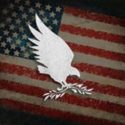Libertarianism in Star Wars
[dropcap size=big]W[/dropcap]hether you’re Republican, Democrat, Libertarian, or Communist, almost everyone can agree Star Wars is one of the most beloved science fiction franchises of all time. In fact, the Star Wars universe is so vast, it actually cost Disney $4.05 Billion. Aside from capitalizing on all the TV shows, comics, video games, posters, clothing, toys, and other memorabilia, Disney is bringing Star Wars back to the big screen with Star Wars: The Force Awakens. The announcement of the new movie was met with mixed reactions: some felt excited about the new movie, some felt upset that Disney had bought out their favorite movie series, and others didn’t know what to think. However, once the new trailers came out, the general consensus was that the new movie looked awesome as hell. So awesome that it nearly crashed every site for pre-ordering tickets.
When the fanbase thinks of Star Wars, especially the original trilogy, they think of the Rebel Alliance- a group of freedom fighters dedicating to restoring the Republic, fighting against the corrupt Galactic Empire. It’s no surprise that this group of freedom fighters draws upon libertarian themes. In fact, even the Empire, the CIS, and the Jedi exhibit tendencies that libertarian fans connect to modern day politics. Here are 5 libertarian themes one can find in the Star Wars movies.
1. Secession
//
Separatists are a mixed bag when it comes to politics. Any group of people regardless of political belief would consider seceding from a government they viewed as corrupt or unfair. This is a libertarian concept. Any group that wants to leave another group should be allowed to do leave peacefully and form their own society.
In the prequels, the Confederacy of Independent Systems (CIS) gathered a large group of planets sick of the Galactic Republic’s high taxes, bureaucracy, incompetent leadership, and unconstitutional laws. The new alliance of systems, however, was merely a ruse devised by Chancellor Palpatine for gaining emergency powers to become a dictator. Palpatine used controlled opposition to extend the war long enough to destroy the constitution and kill off everyone who disagreed with him and his new Galactic Empire. By the end of the fighting, Palpatine emerged unchallenged as the single most powerful man in the galaxy, with his apprentice Darth Vader. Still, the new Rebel Alliance emerged from the ashes of the Separatists and proved to be an opposing force Palpatine could not control.
2. The Non-Aggression Principal
The Jedi had a very libertarian approach to weapons, including the force. They were by no means pacifists, as they would use defensive force to protect those they cared about and to preserve the Republic. In fact, one of the tenants of the Jedi Code is:
“A Jedi uses the Force for knowledge and defense, never for aggression or personal gain.”
One can argue that learning how to use the force for knowledge is personal gain, but the Jedi more than likely meant to not use the force for personal gain if it hurts others. Again, the words “never for aggression” means not to initiate force against anyone acting peacefully. This ties in perfectly with the non-aggression principle.
3. Agorism
If you’re a market anarchist, Han Solo was probably your favorite character. What’s not to like? The man was clever, daring, and rebellious. He was no fan of rules and regulations imposed by the Empire, which is why he broke them for a living. Han Solo made money off of smuggling illegal goods around the galaxy, and even put aside his lucrative career doing so to help bring down the government which imposed those unfair rules. Han hated the Empire and loved the free market so much he risked his most prized possession- the Millennium Falcon- to ensure the Empire fell.
4. Private Conscription
Congressman Ron Paul once suggested that the United States send mercenaries after Osama Bin Laden. They were cheaper, more efficient, and less of a liability. His proposal was ignored, and the United States instead spent hundreds of billions of dollars and thousands of lives on finding and killing Osama Bin Laden.
Likewise, Darth Vader had trouble capturing the rebels, who had been a thorn in his side for too long. When the Imperial Military had proved unsuccessful, Vader employed Mercenaries to capture the rebels. This proved far more effective, as bounty hunter Boba Fett managed to track and find the rebels for Vader, and make off with Han Solo to Jabba the Hutt. This is an example of a market mechanism proving more effective than a government one.
5. Patriotism
//
The Rebels hated the Empire, not what it once stood for. For thousands of years, the Republic and it’s Jedi Order stood for truth, justice, and freedom, but had been corrupted by the acts of a few. The Rebel Alliance were formed out of a group of loyalists who loved the Republic and wanted to preserve what they saw as good in it. Hence the name “Alliance to Restore the Republic” or “The Rebel Alliance” for short. Even after all these decades, they wished to see their Republic restored.
Similarly, we see people from the Republican, Libertarian, Constitutionalist, and Tea Party rallying together to demand the restoration of the original form of limited government. The founding fathers would be heartbroken to see the numerous blows to the constitution that the authoritarian left constantly makes, just as Bail Organa and Mon Mothma were saddened to see their Republic being torn to shreds.
Star Wars teaches us the danger of an ignorant democracy and the importance of standing up for what you believe in. Some times all it takes is one person to turn the tide of a war- for the better or worse.
